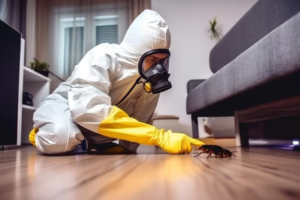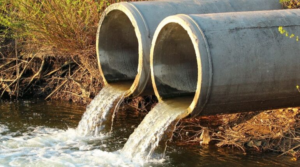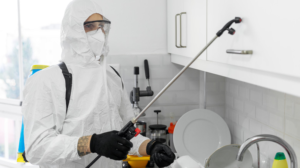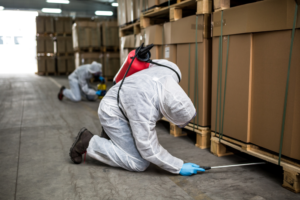Hiring the right general contractor is essential when remodeling a home or building a new one. Finding a fully licensed professional with dozens of glowing references should be a top priority.
General contractors are responsible for big-picture planning and day-to-day management of a construction site. This includes obtaining the necessary building permits and arranging city inspections to ensure construction is up to code. Contact General Contractors Lexington KY now!

The planning phase involves establishing the project’s fundamental guidelines, including scope, time, and cost. A good project plan is a foundation that allows all parties to assess the likelihood of unexpected events, such as weather delays or changes in building code requirements, and devise strategies to mitigate these risks.
The GC or CM leads this process and brings together the team that will execute the project. For large projects, GCs and specialty contractors work with their teams to identify the number of crew members they can assemble to complete the job. They also purchase or rent the materials, equipment, and tools required to complete their portions of the build. Lastly, they obtain and review blueprints and other documents needed for the construction process.
During this phase, the GC or CM will often meet with all stakeholders to get an overview of the project. Stakeholders may include:
- The owner or client who initiates the project.
- Design professionals.
- Local government authorities responsible for permits and compliance and financiers.
In addition to these entities, the GC or CM will also meet with the superintendents and specialty contractor foremen who are in charge of the day-to-day construction activities on site.
The GC or CM will work with all the parties to set a timeline for project completion. This timeline is based on the estimated amount of time it takes to complete each individual task. The GC or CM must keep track of both the timeline and the budget, ensuring that all work is completed within the specified time and at a quality level acceptable to the client. They will also create a list of all items that need to be fixed before closeout. This list will serve as a guide for the crews as they complete their work and ensure that all aspects of the job comply with the project specifications.
Scheduling
One of the biggest challenges in construction is keeping the project on schedule. The GC must manage this task and provide the team with clear and accurate timelines for each phase of work. This helps avoid costly delays and allows the GC to communicate expectations for completion with both clients and employees.
The GC will often create a master project schedule, which is then broken down into individual orders and timelines for each subcontractor to follow. This scheduling can be complicated by a variety of factors, such as weather, material shortages and labor availability. The GC will also have to consider how these factors may affect the original project planning and timelines.
In a design-build setting, the GC will often have to work with an architect, but in traditional bid-and-build projects they’ll typically have more of a managerial role. In both scenarios, the GC is responsible for the budget and logistics of the project.
A GC must plan and execute every aspect of their job to ensure that the client’s vision is brought to life on time, within budget and at the highest quality possible. They must also anticipate potential roadblocks and react quickly to resolve any problems that arise.
Like any other business, a general contractor needs to make money to stay in business and continue operating their construction company. There are two main ways that they can do this:
Contract Negotiation
Contract negotiation is where the rubber hits the road in construction. General contractors must be able to read and interpret the contract provisions that affect their interests, as well as the contract terms that benefit the project owner. Contracts that include warranties, bonds, and dispute resolution processes also impact the GC. It is critical to negotiate for a clear beginning and ending date for warranties, as well as an explicit clause that defines the scope of repair work. Careless or sloppy labeling of repairs can impact lien claims.
General contractors have an edge in this area because they are already familiar with many of the common construction contracts and their provisions. They can review the contract with a legal counsel and recommend modifications before it is submitted along with the bid.
On large projects, GCs typically solicit multiple bids from subcontractors and suppliers to get the best prices on raw materials and building components. This process weeds out inexperienced contractors and often results in cost savings. However, it can lead to costly change orders later in the project that drive up overall project costs.
During the bidding process, GCs can also request contract add-ons, like early start dates and extended durations of work. These changes can influence the GC’s final proposal and impact the project budget.
Contractors must be licensed in most states to ensure that they follow guidelines for insurance, taxes, and safety. In addition, licensing helps a client confirm the contractors’ integrity and trustworthiness, which can reduce the risk of non-payment. In the event of a disagreement, most contracts include arbitration and mediation processes that resolve conflicts, with litigation as a last resort.
Contract Administration
Contract administrators oversee all contract-related activities and tasks for construction projects. They are responsible for everything from sourcing potential contractual partners through request for proposal processes, to ironing out the details of contracts with those partners, to negotiating contract terms that best suit their company and the project requirements. Contract administration also encompasses creating and maintaining a comprehensive contract management plan. This is an important element of successful project completion and can help to reduce risks, disputes, and litigation.
As the project moves into the construction phase, contract administration duties often become more complex. Contract administrators are tasked with overseeing multiple different subcontracts that are issued to specialty contractors who are hired on a project. This involves putting together individual contracts for each of these contractors, ensuring that they adhere to the prime contract and getting them signed by all relevant parties. This can be a time-consuming task for GCs and requires a great deal of negotiation skills.
While the majority of a contract administrator’s work is done in an office, they must spend some time on the job site to make sure that all equipment and materials are being used properly, efficiently, and safely. Contract administrators must also ensure that work on a construction project does not exceed the established scope or budget. Any deviations must be approved via change orders by the contract administrator, and these changes are then incorporated into the prime contract documents for that specific project.
The final role of a contract administrator is to monitor and manage the financial aspects of a project. This can include predicting cost overages through the use of software tools, ensuring that all payments are made in accordance with the agreed upon terms, and monitoring the overall project finances to ensure that it stays within pre-determined budget constraints. Keeping on top of the financial aspects of a project can prevent it from going over budget, which is one of the primary reasons that contract administrators are a vital part of every construction project team.
Subcontractor Management
Subcontractors play a critical role in executing specialized scopes of work that contribute to overall project outcomes. Their performance, in turn, impacts the GC’s project schedule, budget and quality. As a result, GCs often take a proactive approach to ensuring high-quality subcontractor results.
During the planning and contract negotiation phases, GCs establish clear benchmarks for subcontractor performance that align with the client’s project vision. In addition, GCs regularly inspect subcontractor work through a systematic process to ensure compliance with contract stipulations and the client’s expectations.
In addition, GCs must be open to receiving feedback from specialty trade partners, which offer invaluable onsite and project-specific insights. The best way to ensure a positive relationship is by establishing effective communication channels that foster collaboration and a sense of teamwork. For example, incorporating pull scheduling—a collaborative scheduling technique that involves all stakeholders and trade partners—into the project planning phase allows the GC to tap into these perspectives and incorporate them into the plan.
The GC must also communicate any new developments or unexpected changes to the subcontractors in a timely manner. This enables them to respond quickly and provide ideas or solutions that advance the project forward. It also enhances responsiveness and facilitates prompt issue resolution that nurtures a healthy working relationship.
GCs must also ensure that their subcontractors are vetted, qualified and insured. This is important because it helps protect them from unlicensed, unauthorized and inexperienced workers who can compromise the safety of employees, clients and visitors and negatively affect project results. As a result, GCs must regularly review and evaluate their subcontractors’ insurance policies and credentials.








